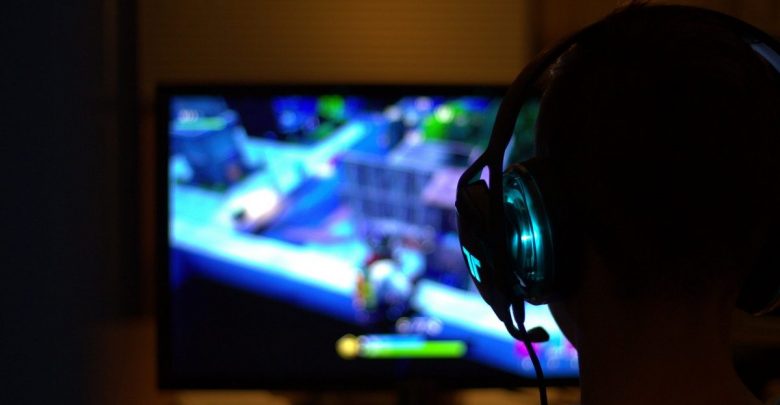
Today’s current and latest games are designed to perform and place their fans at the heart of the action for more immersive gameplay experience. The software developers have programmed these games and software applications to run with any visual settings with a standard of sixty-hertz (60 Hz) up to a maximum of two-hundred and forty hertz (240 Hz). THes display systems can give a considerable amount of refresh rates essential for most gaming purposes.
PC Gaming Refresh Rates
The refresh rate of a computer display is the speed at which the monitor’s visualization image refreshes. It is the number of times a monitor can change frames inside the count of one second. A faster refresh rate means that the image can be updated several times within a second. This results in a visually-appealing gaming experience and the smoother appearance of all the images shown.
The number of refreshes per second done by a PC monitor is measured in hertz (Hz). Many people can do most with a standard sixty hertz (60 Hz) computer monitor, but the 240hz monitors are good for gamers since it is capable of quick reaction times and rapid refresh rates per second. The two-hundred and forty hertz (240 Hz) monitor is now the maximum and ideal display platform for most personal computer gaming activities.
Motion blur is an unwanted occurrence that most gamers experience in their gaming screens. A solution for motion blur and dropping or lagging frames is increasing a monitor’s refresh rate. Most gaming communities recommend monitors manufactured with the refresh rates of 60 Hz, 120 Hz, 144 Hz, and 240 Hz. These are the gaming market standards, but 240Hz is the best since it optimizes refresh rates that result in rapid reaction times and smooth gaming experience.
The pursuit of quicker refresh rates is advised for gaming purposes. It allows the computer screen to keep up with the virtual entity’s rapid and fluid movements controlled by a human player. Most of today’s games are detailed to incorporate thorough realism that even applies to most of the gaming physics visualized into the gaming screens. An excellent monitor can visually enhance great detail, textures, and resolutions done to the game assets and models with the best refresh rate of two-hundred and forty hertz (240 Hz).
Why are Refresh Rates Crucial to the PC Gamer?
The computer display with a faster refresh rate is essential to the needs of the modern gamer. A quick refresh rate updates the image display of a monitor several times inside a second count. It results in a smoother and reliable visually-immersive gaming experience with no display hang-ups. The most important variables to consider in purchasing a monitor are its refresh rate, ability to handle motion blurs, and response time.
Motion Blur
A monitor’s slow refresh rate or response time may cause the blurring of an interactive image that is important to scenes within a game. Slow response time means that the pixels take longer in the transition from a previous state to an updated version. The lagging of pixel processing may cause trailing or ghosting, where two images overlap each other.
Response Time
Response time is the duration it takes for one singular pixel to transcend its previous appearance to its latest update. The transitioning phase of a pixel may also affect its ability to change its color compositions that are essential when assembling or rendering a high-resolution image. Pixels are measured with the unit of milliseconds (ms), which is a crucial component when handling refresh rates. Ideas can transform quickly if the pixels themselves change faster.
Adaptive Display Technologies
One most common feature within a computer game or software is the Vsync. When Vsync is activated, it facilitates the integrated video card’s similar function in conjunction with the monitor’s refresh rate. Performance and visual problems may occur if the frame rate lags behind the refresh rate. The phenomenon has been solved by the introduction of technologies developed by video card manufacturers:
- Nvidia: G-Sync
G-Sync is a display technology that has adaptive refresh rate features. It allows the monitor to update its images based upon the frames distributed by the video card. It makes sure that the frame rate performs in rapid succession alongside the refresh rate. G-Sync is Nvidia’s version of the adaptive refresh rate technology.
- AMD: FreeSync
AMD’s FreeSync is its answer to G-Sync developed by Nvidia. They both work similarly and spectacularly by eliminating screen tearing, performance dips, rate synchronizations, and display lagging problems.
Conclusion
The best refresh rate for PC Gaming systems ranges from 144 Hz towards the current maximum of 240 Hz. These refresh rates eliminate two problems known as motion blur and have improved response times. The refresh rate is the computer monitor’s ability to update its images quickly inside the count of a second and are measured by the unit of milliseconds (ms).
Read Next: Flying in Minecraft: Kill the Ender Dragon and Get the Elytra!.



